Tuesday, and we’re off travelling again, 20 miles south to Roeselare, and the Rodenbach brewery. To me, as a historian of beer and brewing, Rodenbach is a fascinating operation, since it brews well-aged ales in what is almost certainly the same way that English brewers did 150 years ago, vatted for months, or years, and impregnated with Brettanomyces and other organisms to produce what one commentator called “the liqueur of the working man… thoroughly matured, to shed [their] sweetness and acquire the wine flavour… a delightful substitute for port wine.”
That style of beer has almost completely vanished from Britain, but is still appreciated and loved in Belgium. Rodenbach’s brews, too, are often compared to wine. In 1878, Eugène Rodenbach travelled to England to learn more about the brewing trade by working in a brewery “near London”. We don’t, alas, know whose brewery it was that Eugène worked in, but I think we can be pretty certain it brewed the sort of old strong XXXX vatted ale, selling for one shilling and eight pence a gallon, and thus with an implied OG of 1085 or 1090, twice as strong as the standard XX mild ale, that almost every brewery in England seemed to brew at the time.
It has been suggested, apparently solely on the basis that Greene King is about the only brewery in Britain still ageing a strong ale in vats and then mixing it with a younger ale, that it was Greene King’s brewery Eugène spent time at: ignoring the fact that Messers Greene and Messers King did not merge until 1887, I doubt that greatly, because Bury St Edmunds is not “near” London: it’s 60 miles away.
It seems to be widely believed that Eugène took back with him to Belgium lessons in ageing beer in vats, and mixing old and young beers, from his time in England, though the oldest foeder at the Roeslare brewery is dated from 1832, meaning, presumably, the Rodenbachs were already ageing beer in vats decades before Eugène travelled across the Channel. Unless someone finds Eugène’s long-lost diaries, we are unlikely to ever know what exactly he learned in England. All we can say, as far as I can see, is that he almost certainly found himself at a brewery somewhere not too far from London that was ageing strong ales in vats, and that probably had some influence on his later practice at Roeslare.
The brewery has certainly boomed since Eugéne died aged just 39 in 1889, when output was 23,500 hectolitres a year: today it’s seven or eight times that. Rodenbach no longer makes its own malt, but a short way into the site the beautiful 1930s maltings still stands, its tall circular kiln, 30 or so feet in diameter, the base built of dark red brick, surmounted by a tapering structure clad in black slate tiles and topped by a large iron cowl stamped “1933”, looks curiously ecclesiastical, like a tower at a monastery, and stands in sharp contrast to the nowhere-near-as-tall cream-coloured modern fermenting tanks alongside.
The nearly 300 wooden foeders, with their red-painted iron bands, in the brewery cellars, where the beer sleeps while yeasts and bacteria feast, are just as impressive. You can read that Rodenbach apparently has a whole tree kept on site to provide fresh staves for repairs by the in-house cooper to the vats. We were lucky to meet Rodenbach’s brewmaster, Rudi Ghequire, who kindly presented our tour leader, Ron Smith, with a couple of bottles of beers that had not at that point been officially announced or released, so la la, perhaps I ought not to talk about them … I CAN, of course, talk about the beers we tried, starting with the FruitAge, Rodenbach’s “cherry beer aperitif”: 3.9 per cent abv, well-chilled, simple, but lots of cherry refreshingness. The Grand Cru, six per cent abv, two thirds vintage beer and one third young, is, like so many Belgian beers, another cracking accompanist alongside foods from the simple to the complex: sour yet balanced, it cleanses and set up the palate perfectly. Rodenbach Alexander, my personal top choice, is the far more complex big brother of the FruitAge, basically the Grand Cru with added macerated sour cherries, sharper and deeper, with funky undertones, and notes of almond from the cherry kernels. We drank the Classic, the 5.2 per cent abv mixture of three quarters young beer and one quarter old, last of all, which was probably a mistake: it was served too cold for my taste, and was slightly overwhelmed by the spicy fried shrimp with beer dip that was lunch.
On, now, another 20 or so miles west to the St Bernard brewery, close to the French border. You are in the heart here of what was, just over a century ago, the Western Front, the strip of land that saw four million men killed during four years of fighting. One of them was my grandmother’s favourite younger brother, Lance Corporal Edward Haynes, on 12 February 1916. I only realised later that, on our journey between Roeslare and St Bernardus, we passed within two miles of where Edward died. A German shell landed in the trench close to the small village of Boezinge, three miles north of Ypres, that Edward and his fellow soldiers in the 12th Battalion, Rifle Brigade had just moved into. He was 18 years old, having lied about his age to join up, and must have been one of the youngest NCOs in the army. There are around a dozen war cemeteries in the district, but Edward has no grave: the exploding artillery shell blew him to a million bloody fragments in a moment. I have a picture of him in his army uniform: he looks like the young schoolboy he was.
Apart from those cemeteries, with their lines of thousands of identical white War Graves Commission headstones, there is little in the neat West Flanders countryside today to show how racked, stinking and torn this landscape was when my mother’s teenage uncle died 107 years ago trying to stop the lunatic ambitions of Kaiser Wilhelm II. The St Bernardus brewery has a terrific and expansive rooftop bar, with room for 300 drinkers, where you can stand outside and look over peaceful green hopyards and calm yellow fields of grain that were once muddy, smoking swamps pocked and riven with trenches and shell holes.
Ach, but I am sure my great-uncle would wish me to move on: we are here for the beer, and excellent it is. I was delighted to discover the nitro version of draught St Bernardus Abt, the beer that, frankly, Westmalle 12 wishes it was: creamy, powerful, deep and delicious. I was also hugely impressed with the newest St Bernardus beer, the Extra 4, 4.8 per cent abv, blond, very slightly tart and lightly lemony: I would be very happy to sit in the sun and look out over the hopfields while drinking this beer all day.
The bar also stocks beers from the Katzematten brewery in Ypres, now nine years old, which was effectively a joint venture between Hans Depypere, CEO of St Bernardus, and his good friend Rudi Ghequire at Rodenbach – Rudi’s son Maarten now works for the brewery in Ypres. The brewery’s beers are branded as Wipers Times, the name of the satirical newspaper produced during the First World War by British soldiers on a printing press based in the town’s old ramparts, where the brewery itself is now located (“Wipers” being the British Tommy’s attempt at pronouncing Ypres).
Sadly, or perhaps wisely, the Bar Bernard closes at six, and we needed to get on the move anyway, since we were booked into a hotel that night in Amsterdam, 80 miles away, so after a quick raid on the brewery shop, where I was delighted to be able to grab a magnum bottle of Abt 2013 (guess what I’ll be having with my Christmas dinner) we were away.
Antwerp was the start and finish for a 50-mile round trip the next day that took in two more sites I was keen to see, the Duvel Moortgat brewery at Breendonk, and Westmalle Abbey. Duvel’s main and best-known product, of course, is the eponymous strong blonde ale, 8.6 per cent abv, invented in 1970. With its incredibly tight head and brilliant pale golden colour, despite the many imitators it has spawned, it is one of the most instantly recognisable beers on the planet, even before you sip: twice I have had Duvel come up in blind tastings, and I spotted it at once both times.
If there is a Guinness Book of Records category for “most brewery visits over a lifetime”, the title is probably held by Gerald Daniels of Crookham Travel, who has, apparently, been to around a thousand different breweries. My personal haul is vastly more modest – Duvel was my 135th – though it does cover five continents and 19 countries. One stainless steel copper or mash tun looks pretty identical to another, especially since they mostly come from the same two or three manufactures – in Duvel’s case, Steinecker of Germany – but the trip round Duvel is still an interesting tour, if, like me, you’re a sucker for shiny kit and rows of fermenting vessels. At Duvel the guide scatters nerdy tit-bits like peanuts in front of pigeons (the original 300kg of yeast dropped into each 300-hectolitre fermenting tank multiplies to two tonnes of yeast in seven days, for example, and Duvel Moortgat, still owned by the Moortgat family, now runs 13 breweries around the world, including three in the US, having just acquired one in China to brew, not Duvel, but Vedett, its Bavarian-style lager, which is apparently hugely popular with Chinese beer drinkers). Even the bottling hall (usually one of the duller sections of any brewery visit, but obligatory because brewers are always immensely proud of their bottling kit) is worth noting, for its size and sophistication, with the machinery being able, apparently, to spot and reject bottles that look just like, but are not, Duvel ones.
On the way to Westmalle, thanks to a recommendation from one of our party, John Allison, we visited what is, surprisingly (at least it surprised me), Belgium’s first professional meadery. The Blacksmith’s Meadery is run out of his home in Schilde, seven miles from the centre of Antwerp, since 2016 by Gert Smet (Smet means “smith”, hence the name of the operation). Gert got into mead making in the early 2010s via a Belgian medieval re-enactment group called Ortus Phoenix, whose members like to think they are living in the late 15th century, just after the death of Charles the Bold, Duke of Burgundy. Apparently Gert drank some mead at a medieval festival in 2011 that was so bad, he swore a mighty oath that he could do much better himself.
And indeed he could: Gert is clearly one of those lucky people gifted with an excellent taste imagination and a top-class palate, all vital talents for the best chefs and the greatest brewers – and the most highly skilled mead makers. I have not been a fan of mead, finding it too sweet and one-dimensional, but standing in Gert’s suburban back garden sampling from more than a dozen different meads, braggots (beer-mead crosses) and cysers (cider-mead crosses), I found I was being converted. These meads, flavoured with raspberrys, blackberries, cherries and blueberries, aged in rum, stout, Bourbon and Triple Sec barrels, would have blown the chain mail socks off any 15th century Burgundian mercenary, and they certainly convinced me to come away with a bottle.
Westmalle is another brewing monastery that, while it will not allow visitors into the brewery, serves its beers at its own outlet, the Café Trappisten, across a couple of fields from the abbey. There you can try Westmalle Dubbel on draught, and the Extra, the daily beer of the monks. The café was opened exactly a hundred years ago, though it was rebuilt in 2008. It is, like similar outlets across Belgium, a popular destination for families driving out into the countryside from the city, and it even has a special children’s section on the menu, including meatballs with cherry sauce. I cannot imagine anywhere in Britain offering meatballs with cherry sauce on its children’s menu. Hurrah for Belgian children: taught to appreciate the wider boundaries of food from an early age. Mind, this is the country whose schools served (weak) beer to children at lunch until the 1970s …
As it happens, frikandellen met krieken was what I went for myself – adult portion rather than child’s – and another take on beery ice-cream, vanilla ice with raisins soaked in Westmalle Tripel. There were more beery attractions on the menu – ribs in a Trappist marinade, stew with Trappist beer – while other dishes featured the Trappist cheese made at the monastery, in croquettes, in a “croque trappist”, on a cheeseburger, in mac-and-cheese.
After a quick walk up to see the outside of the abbey, it was away back to Antwerp. I’m sorry to say this about what is probably a fine and attractive city, but Antwerp made almost no impact on me: I couldn’t, now, tell you anything about the bars I went in or the beers I drank. About all I remember is a not particularly great Indian restaurant. Put it down to the previous eight days of drinking, eating and sightseeing.
The next day we were off to Germany via the Netherlands and another couple of abbeys. First stop, 40 miles from Antwerp and six miles into Dutch territory, was La Trappe, more properly the Abdij Onze Lieve Vrouw van Koningshoeven, for a beer tasting. I had been round the La Trappe brewery back in 2016, though since then they appear to have widened the range somewhat, with ten different brews now available, including an alcohol-free beer called Nillis, supposedly the world’s first 0% Trappist beer. It’s the Wedding at Cana in reverse: turning beer into water …
I didn’t try the Nillis, but I did the Witte Trappiste, “the first Trappist white ale in the world.” It’s picked up a couple of gold medals since its launch, but I found it slightly harsh, with little aroma and a sour flavour. I liked the Isid’or, a play on the name of the first monk-brewer at the abbey: amber, 7.5 per cent abv, light and syrupy, a good “mid-morning with a Danish” beer. The Quad, 10 per cent abv, was also likeable: deep amber and fruity.
No time for a look round the abbey: we needed to travel back into Belgium – just – for lunch at the St Benedictus abbey in Achel. (The border actually puts a small part of the abbey buildings, and the abbey car park, in the Netherlands.) There are no longer any monks at the Achel abbey – the last two moved away, to Westmalle, in 2021. But brewing still took place there, and the beers were allowed to be called “Trappist”, though their labels did not carry the hexagonal ATP mark that signifies an “authentic” Trappist product.
Then in January this year the abbey, and its brewery, were bought by a Belgian entrepreneur named Jan Tormans, who runs an engineering company. You still can’t get into the brewery, but you can see it behind glass walls from the abbey’s on-site “tavern”. That tavern sells the two Trappist-style beers brewed at the abbey, Blond and Bruin, on draught at eight per cent, and in 33cl bottles, also at eight per cent, plus Blond “Extra” and Bruin “Extra”, each at 9.5 per cent, in 75cl bottles at €10.50 each, or £9. It also now sells, as from the beginning of July, three new beers under the “Passeur” brand, a 5.5 per cent abv wheat beer, a rosé version of the wit, and a 5.9 per cent abv “bitter blond”, which are, at the time of writing, exclusive to the abbey tavern. They were designed to offer something lighter than the abbey beers for people who find an eight per cent beer rather heavy for daylight drinking. The name comes from the “passeurs”, who, in the First World War, helped refugees slip across the border from German-occupied Belgium into the neutral Netherlands.
The Passeur project looks like an early step in Tormans’s plans to expand Achel’s footprint, and increase production and sales. The monks employed no one to sell the beer, and 80 per cent of production went abroad, solely because an independent distributor made a speciality of Achel. Tormans wants to see Achel beers sold on draught in pubs and bars in Belgium and the Netherlands, and in shops and stores, in bottles and cans. Belgian newspapers report that he has bought 60,000 new beer crates, 80,000 new beer glasses and an unknown number of new casks.
I didn’t take any notes, so I can’t tell you what the beers were like, but photographic evidence suggests I drank both the wit and the wit rosé, and ate a slice of a fine-looking gooseberry tart. I also took a picture of a lovely old horse-drawn beer dray, which if it was genuinely used by the Achel brewery, which is what it says on the nameboard, dates from before 1917, when it would have been used by the abbey’s original brewery.
We managed a walk around the abbey grounds, which, it need hardly be said, are just as quiet and peaceful as they were when a priory was established at Achel in 1654: some of us stood on the border, which is painted on the road outside the abbey, and were thus in two countries at once. Then it was back on board the bus and on to our next stop, Düsseldorf, 55 miles to the east.
As any beer fan worth their Michael Jackson’s World Guide to Beer knows, Düsseldorf and its hinterland are about the last hangout in Germany of amber-coloured top-fermenting ale-style brews, German cousins of British bitter and mild, though the beers, while fermented warm, go through a long period of cold conditioning that traditional British ales don’t get. Düsseldorf is also one of the last places to preserve a tradition of pub breweries, and the city’s best pubs are themselves temples of zythophily, highly decorated, carved wood, tilework and stained glass everywhere: absolutely worth a visit in their own right, even if you’re not attracted by the beer. And the beer … well, there I have a problem.
The difficulty I have with Düsseldorfer Alt is precisely that it’s almost, but not exactly like English bitter. It’s clean, it’s faultless, it’s clearly exceptionally well made by brewers who obviously know their craft, but to me there is something missing: maybe it’s the cold conditioning, smoothing everything out, rubbing off any chance of developing the slight abrasiveness that lies, I think, under the surface of a good pint of bitter, maybe it’s the way the malt stands in front of the bitter hop, while in an English ale it’s the other way round. I greatly appreciate smoothness in, say, a Helles or a really good Bohemian pilsner, but in an ale I want a bit of cat’s tongue. Drinking Altbier in Düsseldorf’s classic bars and taverns is an experience I am delighted to have had, but it was like drinking glass after glass of well-made keg bitter: ultimately there just wasn’t enough character. I also don’t like having to drink out of 25cl glasses: I know it’s the tradition, I know Düsseldorf’s well-drilled waiters will continue supplying you with glasses of beer in a flow that ends only when you place your beermat on top of your empty, but I like a pint, I like the feel of a pint in my hand, and I like to be able to take several satisfying swallows from a full glass and still have plenty left.
We managed to whip through four different Altbiers in an evening’s stroll through the lively, crowded Alt Stadt, starting at one of Düsseldorf’s best-known Hausbrauereien, Uerige, on a corner site 200 yards from the Rhine. The name means “grumpy” in the local dialect, apparently from the nickname of the man who converted the building into a brewhouse in 1862. You’ll only be feeling Happy here, particularly, if, like me, you wrap yourself round a large pork schnitzel soon after arriving, and on a busy Friday night there will be no opportunity to be Bashful, since everyone has to squeeze up around the narrow tables. Don’t be Dopey and drink so much you become Sleepy, because there is plenty to look around at here, including a view of the Uerige brewery through windows at the back of the building. The beer itself was dark amber and bitter, with slight caramel overtones and a hint of grassiness – and I’d have liked it warmer …
Next was Ferdinand Schumaker’s, three quarters of a mile away on Oststrasse, the decoration equally Alte Deutsche, the beer served, ostensibly, from a wooden cask (as was the beer in Uerige), slightly paler and smoother than Uerige’s Alt, but again with that grassy German hop apparent. Off again, doubling back in another 12-minute walk to Zum Schlüssel (“The Key”), a tall black-and-white building on Bolkerstrasse with a motto across its front in the local dialect: “Iss was gar ist. Trink was klar ist. Sag was wahr ist.” Translated, that appears to mean: “Eat what’s cooked. Drink what’s clear. Say what’s true.” Mmm. If you think so, Heinrich.
Anyway, the beer, served once more from a wooden cask in a constant stream, the barman sliding filled glass after glass across the copper bar top for his colleagues to pile them onto trays, was sweeter than the previous two, the colour was in between, the bitterness was dialled back, and the head disappeared more quickly. Outside on the cobbled street were tall, narrow tables, for standing at, rather than sitting at. We stood, we drank, and we moved on again, to Im Füchsen (“The Little Fox”), 500 yards north. Another white-on-black building with standing-room-only tables outside, the Füchschen’s Alt, for a change, came in no-nonsense steel kegs. The beer was the darkest so far, more fruity, and with plenty of hops on the nose.
Saturday morning I was up early for a stroll around at least a small part of the centre of Düsseldorf, and a brief look at the Rhine, here, 125 miles from the sea, some 275 yards wide. (For comparison, the Thames doesn’t get that wide until past Wapping…) It looked an interesting, attractive place, cake shops and cafes just opening up, loads of fresh produce on display in the fruit and vegetable market, but whoosh, no time to investigate, we have to be on the coach and away 20 miles south to Cologne, to become better acquainted with that city’s top-fermented speciality, Kölsch.
It seems clear, to an outsider with barely 24 hours’ experience of both cities, that Alt and Kölsch are important components in the way that Düsseldorfers and Kölschen see themselves, in what they regard as their cities’ cultures, in what they believe to be important as citizens of those places, in what makes them different compared to Berliners, or people from Frankfurt or Munich. Pubs, and by extension, beer, are important to the people of the British Isles, but a Mancunian doesn’t regard straw-coloured bitter beer as part of the warp and weft of being from Manchester, and someone from Edinburgh won’t identify with Scotch Ale the way someone from Cologne will identify with Kölsch. Only, perhaps, in Dublin is one beer style accepted as being as much a part of the identity of the city as the Liffey and the statue of Molly Malone. But you won’t find plaques on walls in Dublin directing you round the city’s historic stout sites, unlike Cologne, where the local brewers promote the “Kölner Brauhaus Wanderweg”.
However, we have just five hours in Cologne, so let’s get started. First up is Peters Kölsch, from the Peters Brauhaus on Mühlengasse, just north of the Alter Markt and, like Uerige, 200 yards from the Rhine. The bar has an amazing stained glass ceiling. The beer is lovely, pale, lightly perfumed but not too delicate, with a refreshing bitterness.
Peters, incidentally, is the only brewer to market Kölsch in swing-top bottles, which are sold as “Peters Plöpp”, a name guaranteed to make English schoolboys snigger … “Plöpp”, of course, is the onomatopoeic equivalent of the English “pop!”, the sound a swing-top bottle makes when it is opened …
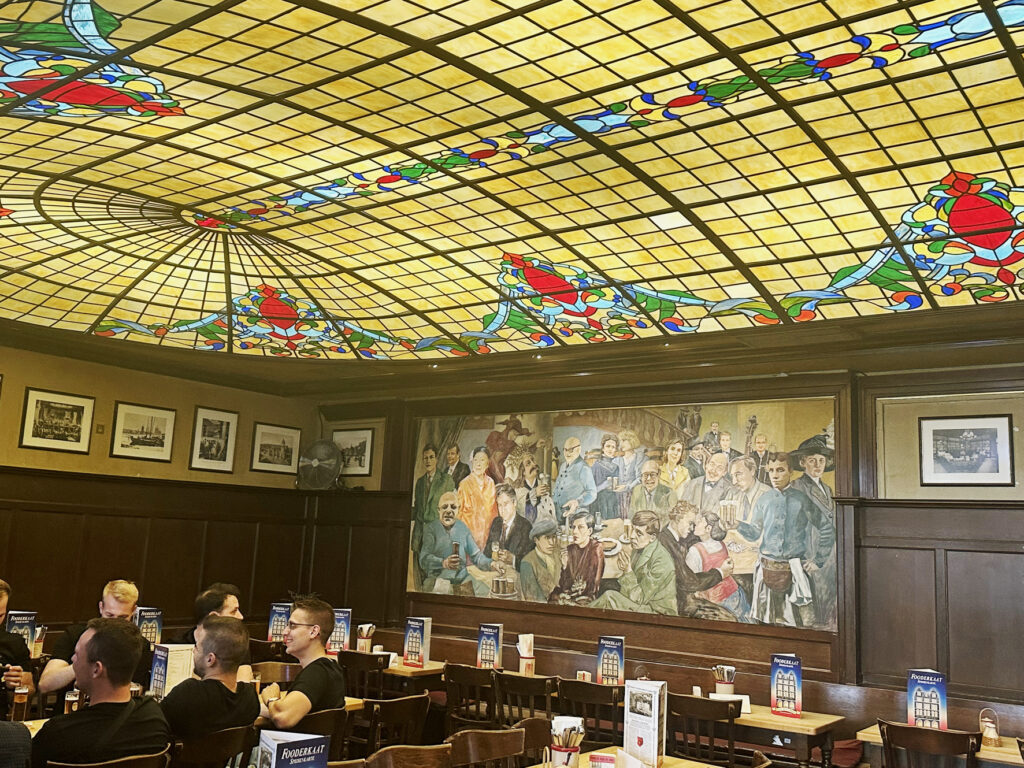
Some 550 yard south of Peters is the Malzmühle (“malt mill”) brewery and bar, making Mühlen Kolsch. This was paler, lighter and less characterful than the Peters, and too thin for me: I wouldn’t want another one, while the whole point of a beer like Kölsch, which is served in even smaller glasses than Alt – 20cl – is that it is meant to be moreish, for, again, the Kobe will bring you a fresh glass as soon as you finish the old one.
I was almost equally underimpressed with the Kölsch at the Pfaffen brewery on Heumarkt, opened not quite 50 years ago: pale, clean, but boring, with not a lot of character, unlike the building the beer is served in, which has almost more character than it knows what to do with, a Disney fantasy of a German tavern: dark oak panelling, wooden carvings, stained glass windows showing revellers, and painted tiles.
The similarly named Päffgen brewery just under a mile and a quarter away on Friesenstrasse, however, produced an excellent example of what Kölsch should be, a fine session beer with light malt on top and a real depth of bitterness, very drinkable, soft, but with a tiny touch of sharpness to maintain interest. This was another classic “medieval” interior, dark carved wood everywhere, and a huge portrait of Gambrinus on the wall.
Back on the Heumarkt, Gilden im Zims, another modern Kölsch brewery/tavern in an old building, supplies a somewhat pils-like interpretation of Kölsch, very pale, but very well balanced, with nothing dominating, a very good example of the style.
Finally our sixth Kölsch brewery of the day is Früh, close to the Dom, Cologne’s spectacular cathedral, and probably the best known Kölsch brand. Beer has not been brewed on-site since 1987, with brewing now taking place on an industrial estate some six or seven miles north of the city centre. Früh’s take on Kölsch is paler than many of its rivals, and more phenolic, more fruity, particularly when it warms – though warming is something Kölsches are not meant to do, that’s why the glass is so small. It certainly brought out the flavours in my Rheinischer Sauerbraten mit Kartoffelklößen, though.
It was now only late afternoon, but we had 120 miles to travel to get back to Brussels for our last night of the tour. Strangely, no one felt like hitting the bars of the capital one more time, but the drinking was not yet over: we all gathered in the breakfast room of the hotel for a last bring-a-bottle party, with everything from cider lambic to Rodenbach Vintage to peach mead, and at least four Trappist breweries represented.

And then to bed, or rather, to pack, trying to make sure the bottles I was taking home would be well-cushioned, but would not do too much damage if they DID break. At least travelling by train removes the worry of overweight luggage: I’ve had to drink imperial stout at the airport because my suitcase would otherwise be over 23kg at least twice in the past. In all, though, after a hugely enjoyable ten days, and something on the order of 70 or 80 different beers across a huge range of styles, I was taking home a comparatively modest haul: five beers, four books, four T-shirts, three cheeses, two glasses, two jars of Trappist paté, one polo shirt and one bottle of Belgian mead … oh, and a host of new friendships, plus the knowledge that I love a good Kölsch, but I still have to find room in my heart for Düsseldorfer alt.
Martyn Cornell travelled with Ron Smith of www.beermba.com BeerMBA.com, to whom huge thanks are due for putting together such a terrific programme. For the avoidance of any doubt, Martyn paid for it all himself.

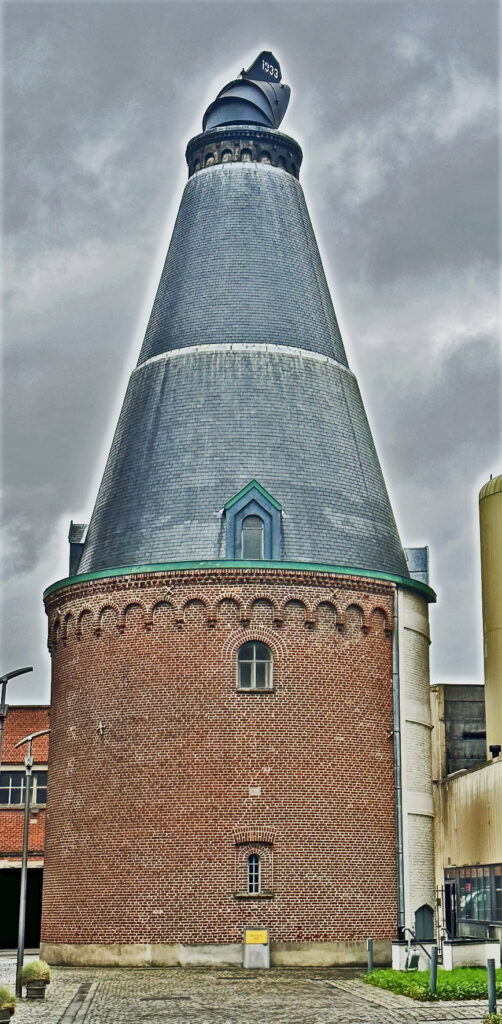
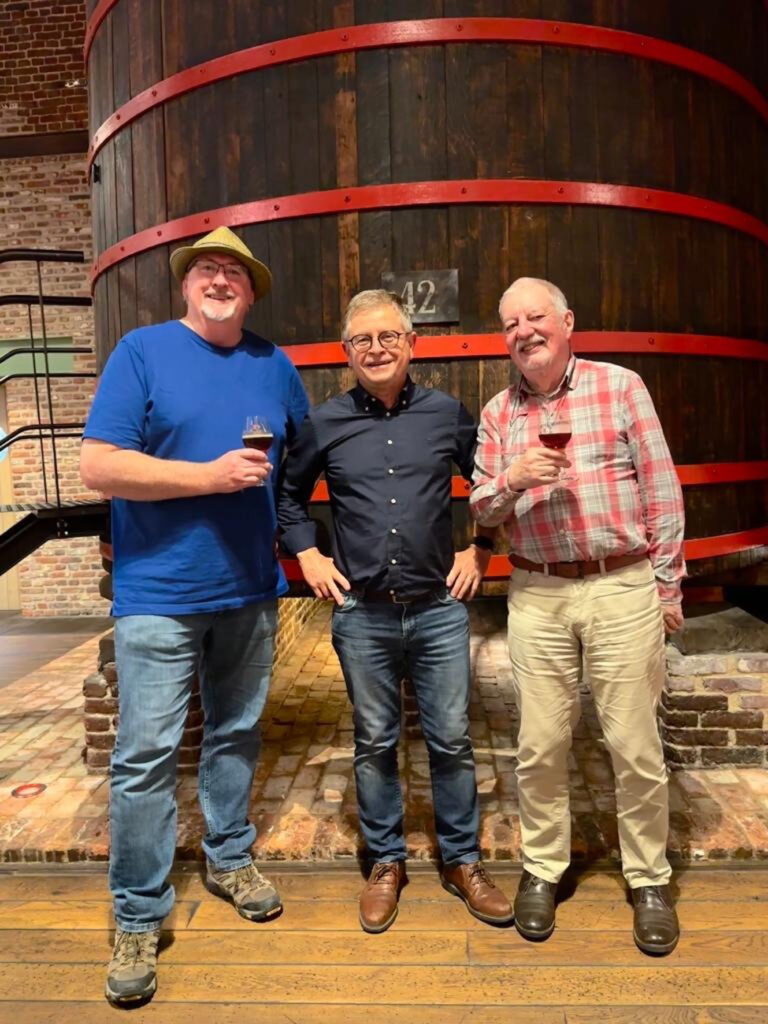
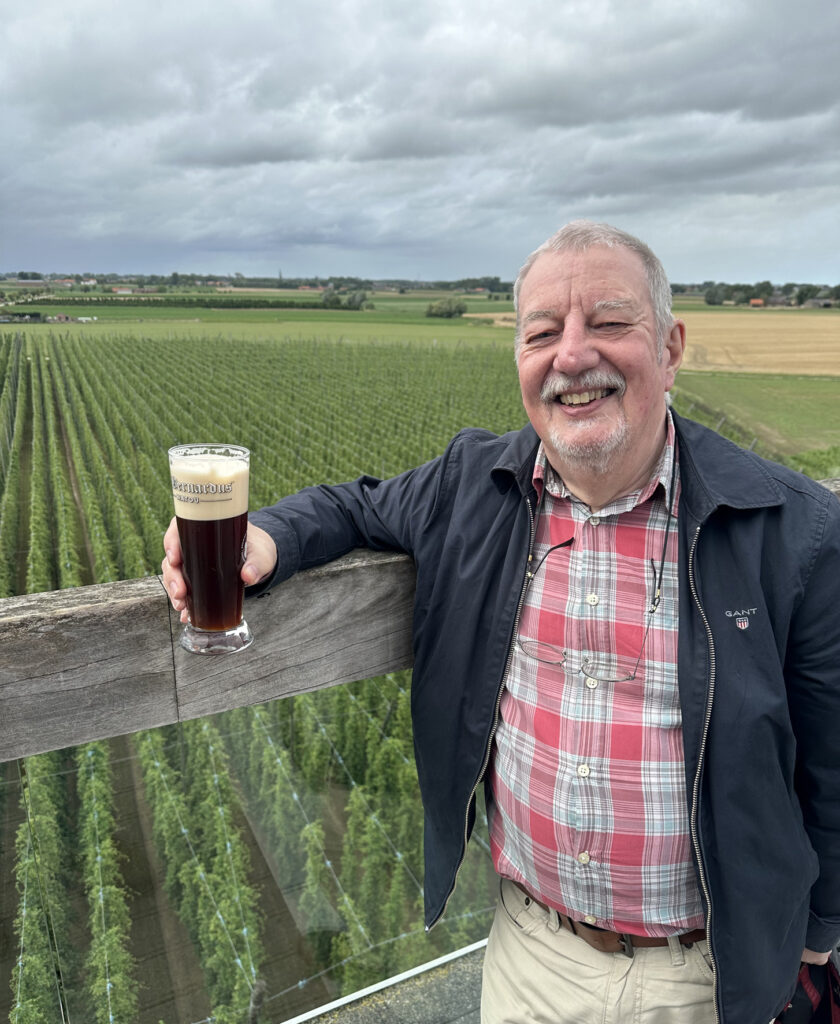
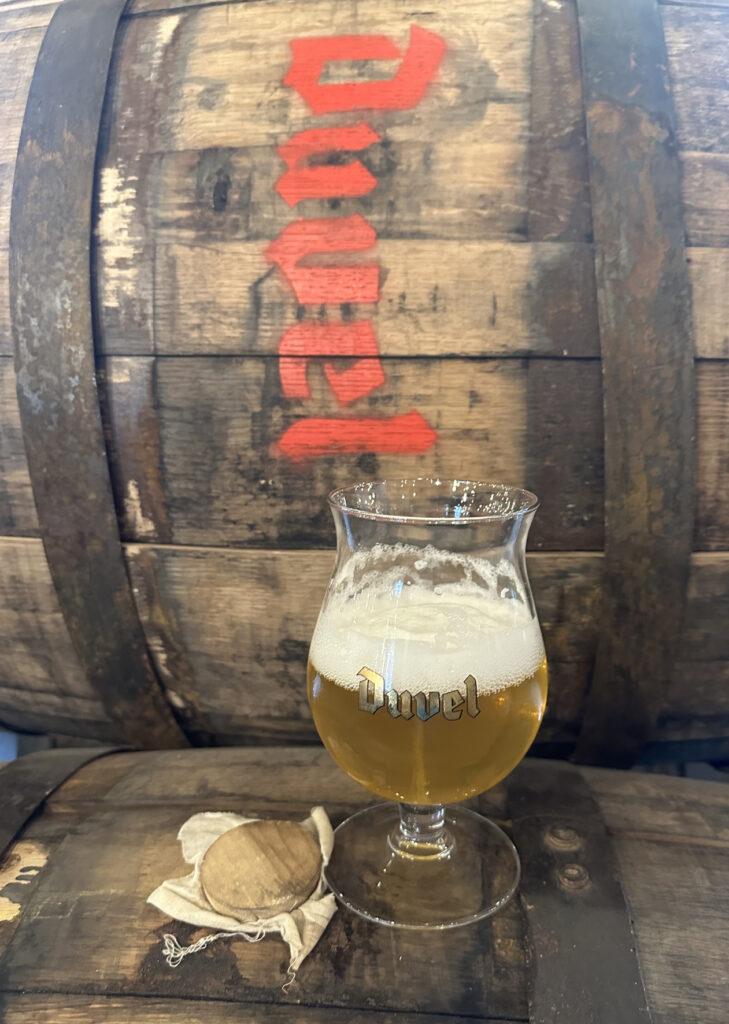
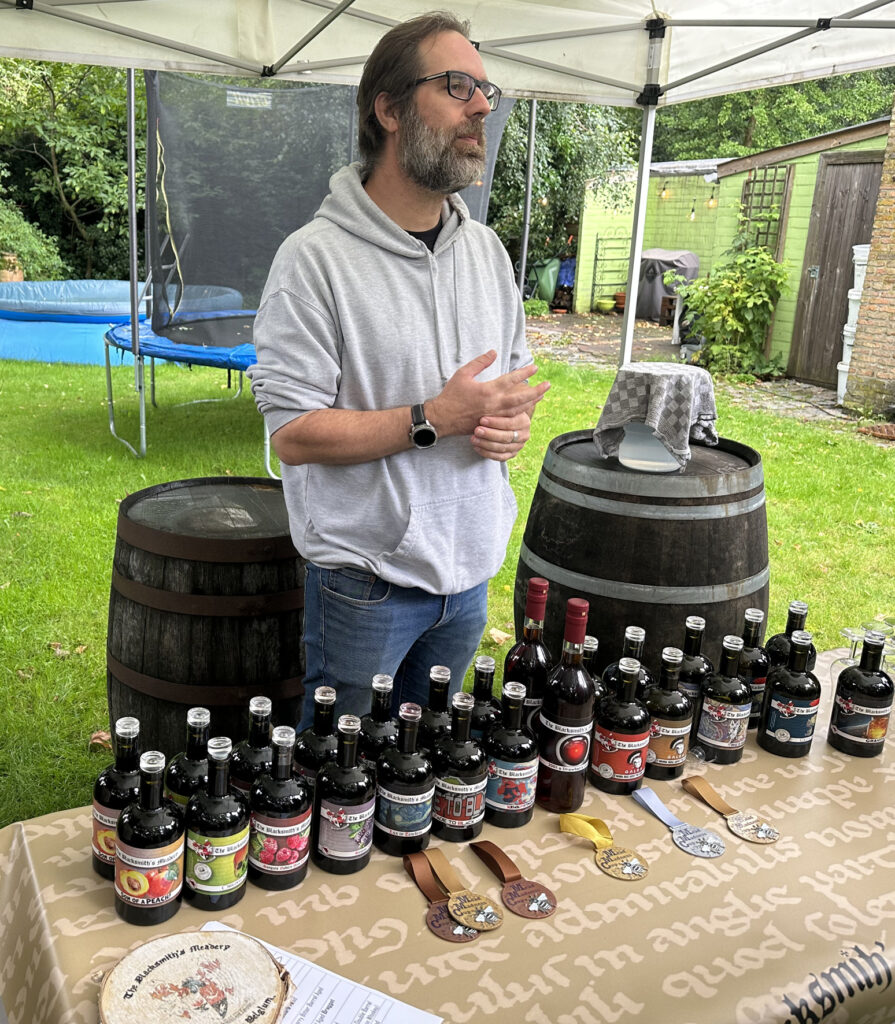
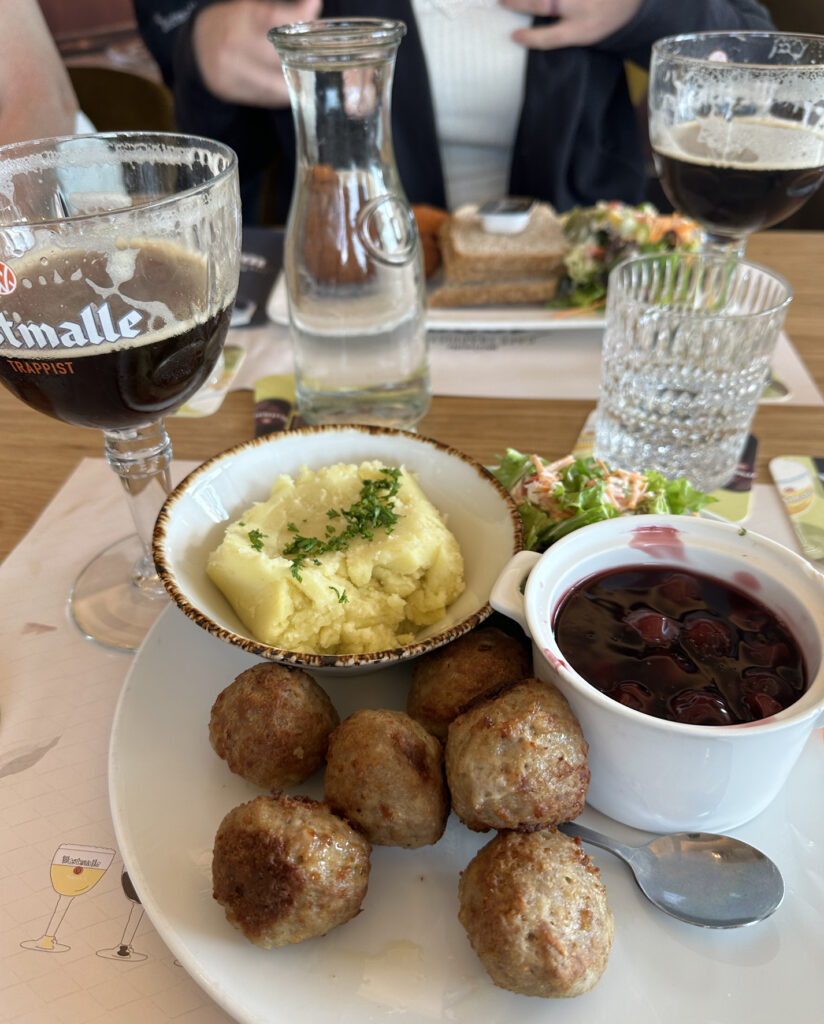
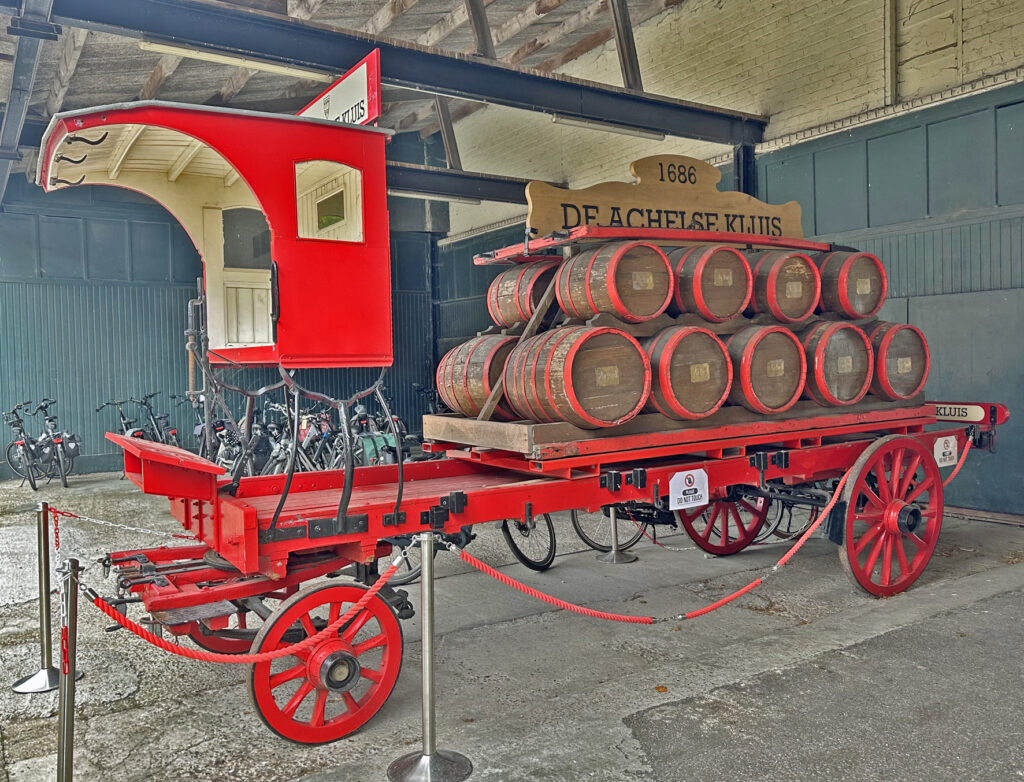
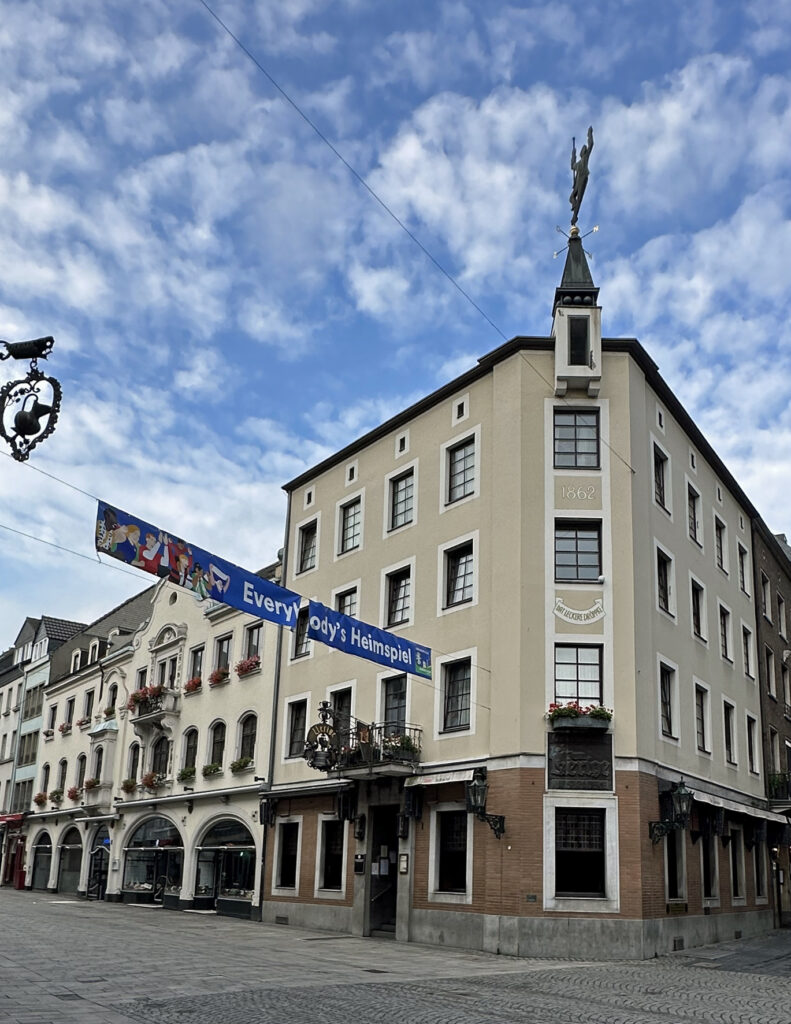
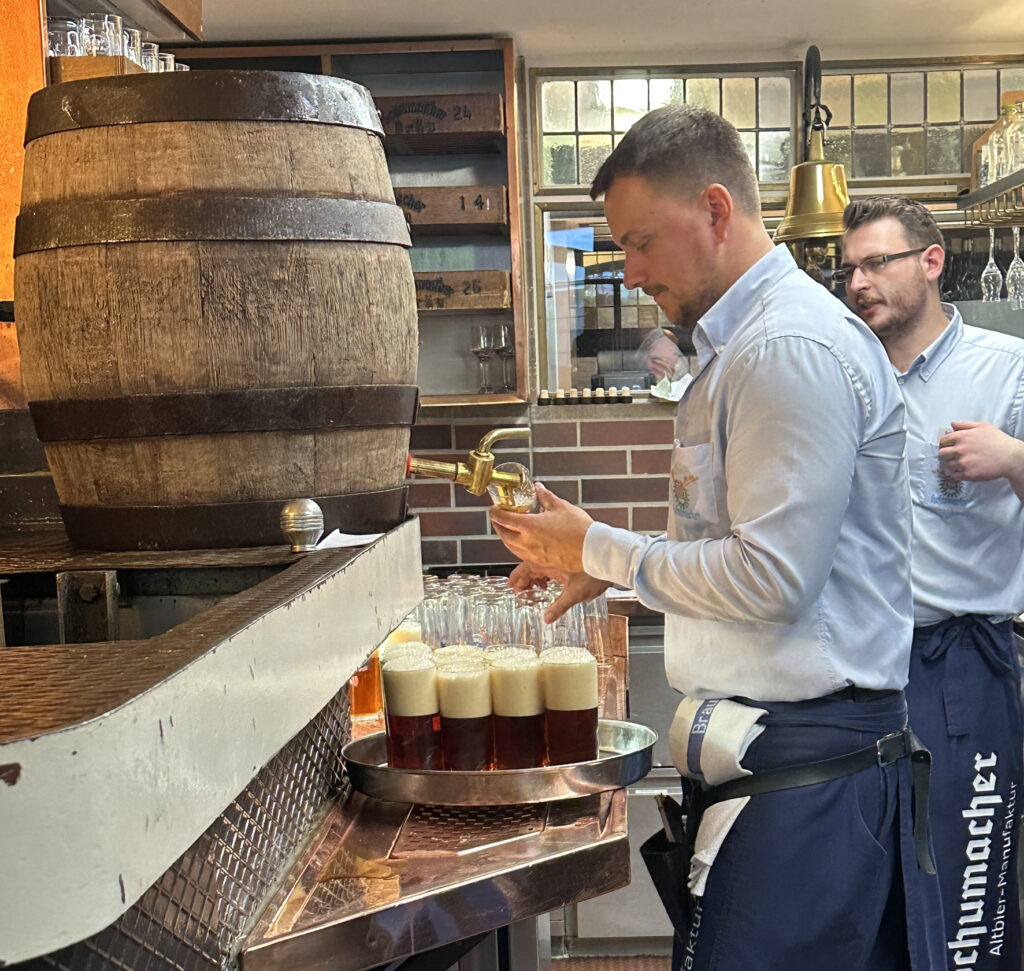
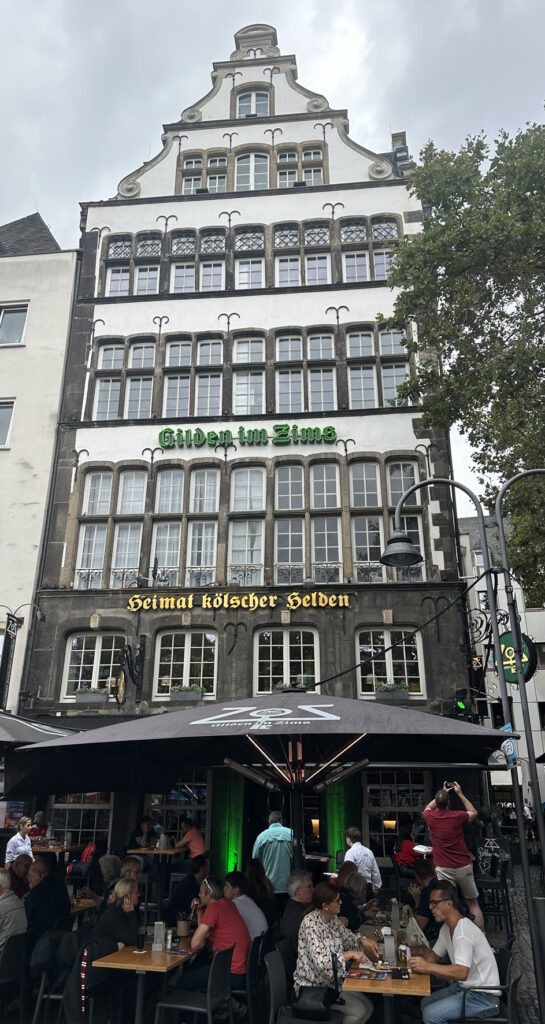

My appreciation of the beers in those two Rhineland cities is almost exactly the opposite of yours. Kölsch is drinkable enough, especially with a meat-heavy meal, and as well as Früh and Päffgen I’ve enjoyed Malzmühle and Pfaffen in Cologne, the latter I recall having an appealingly flowery aroma, but I much prefer Düsseldorfer Altbier. Maybe it’s partly the darker colour, unlike the golden Kölsch which seems to mirror that of the Pils that surrounds those top-fermenting styles in North and West Germany. I had of course read Michael Jackson’s description of both before my initial trip to the Rhineland back in 2009, and a mouthful into my first glass of Schumacher Alt at their pub near the station I knew exactly what he meant about the bitterness of the hops combining with the crispness from the lagering.
[…] To be continued […]
I booked a trip to Düsseldorf and Köln several months before this piece was published but travelled a few weeks after it was posted.
I have to agree with almost all of your comments about drinking in the two cities and used your article, in conjunction with other sources, as a guide.
I particularly agree with drinking out of the small Stange glasses. This can only be a pleasurable experience when the waiters are able to fetch you another one as soon as, if not before, you finish the few gulps that it takes to empty it. Unfortunately my trip was over a weekend and many of the Brauereis were far too busy for service to be adequate. When I revisited some venues on a Monday lunchtime the experience was much better. In fact the servers (who were curiously almost all middle aged men and comprised very few women) were often exceptionally rude in the busiest places.
I see what you mean by comparing Altbier to keg bitter, although I had enough variation to appreciate the better examples (I liked Uerige and Schussel). Some of the Kölsch was excellent although some was quite disappointing (like mass market lagers brewed in the UK with that inappropriately malty aftertaste).
Like you I found the visit to be very enjoyable but got a bit bored by the samey style and, frankly, the tourist trap approach of some of the more famous Braueries.
The waiters seem to be expected to be rude – they’re positively famous for it, like the waiters in Parisian cafés.